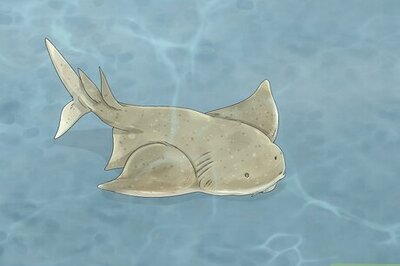
views
When NASA’s Mars Science Laboratory (MSL) lands in the Gale Crater area of Mars on Monday morning, its rover Curiosity will carry on its deck 59,041 names from India. The names were etched on a microchip along with names of thousands of others from various countries who had registered at the NASA website way before the launch of Curiosity on November 26, 2011.
The ‘Send your names to Mars’ initiative got a whopping response, especially from the US, with over 5 lakh space enthusiasts registering their names. There were 77,329 names from UK and the third came India. Right behind us were Brazil, Canada, Australia and believe it or not, Iran!
If the MSL is not affected by a dust storm that is brewing up in Mars, it is expected to land quite peacefully in our neighbouring planet on Monday. The Gale Crater, where MSL is to land, looks all brown and slushy in NASA images. The crater, which has a diameter of 154 km, would be the first subject of study. Curiosity will look for signs that shows life may have existed on the planet. The research will use 10 instrument-based science investigations. The primary mission will last one Mars year or 98 weeks.
While the possibility of life having existed on Mars provokes great interest, a negative finding that conditions did not favour life can also give us a comparative and valuable insight about our own planet and one of our nearest celestial neighbours.
While US President Barack Obama wants a man on Mars by 2030, the rover will also look for clues that may allow life sometime in the future. One of the major hurdles with manned missions to Mars is the heavy radiation that astronauts may encounter. Mars, because of its thin atmosphere and weak magnetic field, does not have the ability to repel or absorb radiation. This could be one reason why Mars does not support life.
Curiosity is equipped with a device, known as RAD, to measure radiation. The instrument was turned on 10 days after the launch and was active for most of the spacecraft’s nearly nine-month journey to Mars. It has already sent home a significant amount of data, about the level of radiation outside the spacecraft.
Curiosity also carries a weather station, an instrument for monitoring natural high-energy radiation and an instrument that can detect soil moisture and water-containing minerals in the ground beneath the rover. Curiosity will analyse samples of modern-day soil for
what nutrients would be available to soil microbes and check for the presence of methane.
At 1,982 pounds, Curiosity is five times heavier than previous Mars rovers, but its landing will involve an exciting sequence of events, all done automatically. Completely unlike its predecessors, Mars Science Laboratory will be in a ready-to-rove condition as soon as it lands. The mobility system, including the wheels, will be all in place before the rover touches the Martian surface.
Equipped with precision landing techniques, but no air-bags for bounce, the MSL is to land within a 20 km landing ellipse on what is called a Mount Sharp in the Gale Crater. The parachute technology will be used to slow down the spacecraft during entry and landing.
After the parachute has significantly slowed, the vehicle and the heat shield are discarded, the descent stage will begin to ease the spacecraft to the surface. Reverse rockets will stabilise the vehicle, protecting it from any horizontal winds. The Mars Science Laboratory will be lowered with a trio of tethers and what NASA describes as an electrical “umbilical cord.”
During the lowering, the rover’s front mobility system will be deployed so that it is essentially ready to rove upon landing. When the onboard computer senses that the touchdown is successful, it will cut the bridle. The descent stage powers away from the rover at full throttle to a crash-landing far from Mars Science Laboratory.
If you were in New York, you could have seen the Curiosity landing on a giant screen at the Times Square.
(Don’t forget to keep track of the Sci-bug every Saturday)














Comments
0 comment